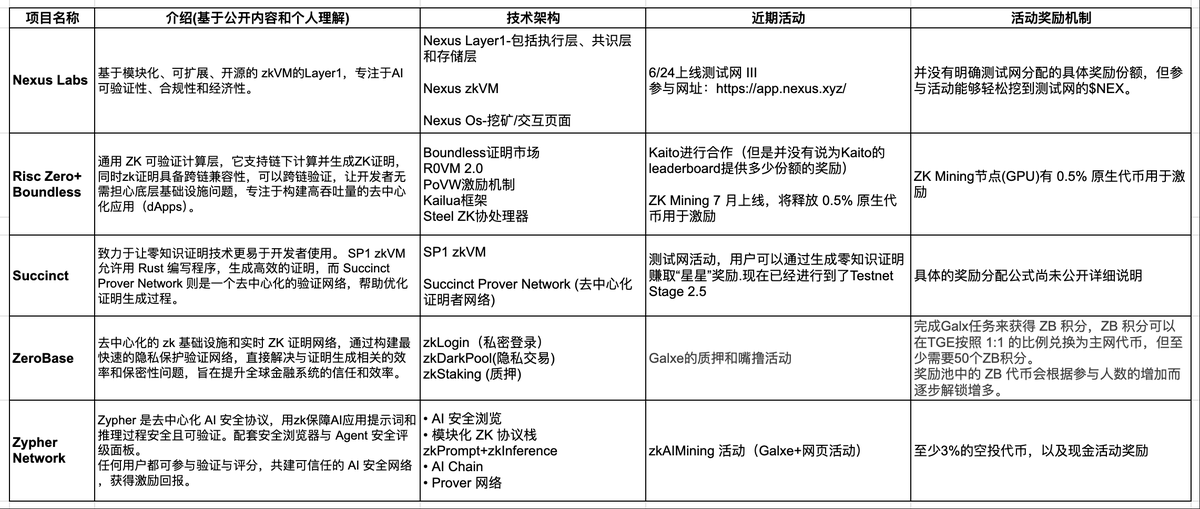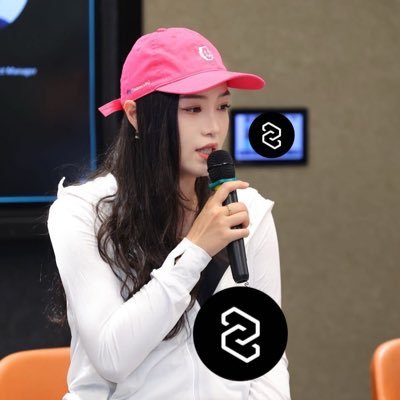Summary of the article "Active Projects in the zk Track":
"Zypher: Rebirth to Save That AI Trader"
"Nexus: The Infrastructure Revolution of Verifiable AI"
"RISC Zero + Boundless: Innovations and Applications of zkVM"
"Succinct - Mature zkVM and Incentive Activities"
"ZEROBASE - Enhancing Trust and Efficiency in the Global Financial System with zk"
This is my first attempt at a long-form output. Thank you for your attention 🙏 I will continue to write more project analyses!
"Active Project Sharing in the zk Track" 🙌
I thought for a long time about what to write, and my friends who know me are aware that I have always been quite interested in zk. So let's take a look at the zk projects that are currently very active (those conducting incentive activities) and those that are gradually becoming active (about to start incentive activities). This article systematically analyzes the five most active and highly regarded projects in the current zk track: @NexusLabs, @RiscZero, @boundless_xyz, @SuccinctLabs, @zerobasezk, @Zypher_Network. I will share insights from several dimensions: project overview, technical architecture (main functional products), recent activities and incentive mechanisms, as well as personal insights from the author.
The following table summarizes the key information of each project for easy visual comparison, while the thread tweets will provide detailed introductions to each project.
A brief overview of ZK, VM, and zkVM
zk (Zero-Knowledge): refers to "zero knowledge," a broad concept in cryptography that indicates that during an interaction, one party (the prover) can prove the truth of a statement to another party (the verifier) without revealing any additional information.
A Virtual Machine (VM) is a computer system simulated by software that can run operating systems and applications just like a real physical computer. In simple terms, a virtual machine creates a "virtual computer" on your computer, where you can install different operating systems (like Windows, Linux, etc.) and run software without affecting your actual host system. The core features of a virtual machine are isolation and virtualization.
Why does blockchain development need a Virtual Machine (VM)?
1⃣️ Deterministic Execution Environment
Blockchain is a decentralized network maintained by many nodes. To ensure consistency across the network, all nodes must reach a consensus on the execution results of smart contracts. The virtual machine provides a standardized execution environment, ensuring that the same code and input produce exactly the same output on any node. This "determinism" is the foundation of blockchain operation.
2⃣️ Security
Smart contracts often involve valuable assets such as cryptocurrencies or tokens, so security is crucial. The virtual machine isolates the contract code through sandboxing technology to prevent malicious code from harming nodes or the network. For example, the virtual machine in Ethereum uses a "gas" mechanism to limit the resource consumption of contracts, avoiding infinite loops or attack behaviors.
3⃣️ Portability
The virtual machine allows developers to write smart contract code once and run it on any node that supports that virtual machine, without worrying about differences in underlying hardware or operating systems. This greatly simplifies the development and deployment process.
4⃣️ Standardization
The virtual machine provides a unified instruction set and execution model, allowing developers to rely on a standardized platform to create smart contracts. This standardization promotes collaboration within the developer community and the prosperity of the ecosystem.
5⃣️ Flexibility and Scalability
The virtual machine supports multiple programming languages and tools, allowing developers to write code in a way they are familiar with. At the same time, the design of the virtual machine can be upgraded with technological advancements, adding new features or optimizing performance.
In short, the virtual machine provides a secure, consistent, and portable operating environment for blockchain, making it a key technology for executing smart contracts. For example, EVM stands for "Ethereum Virtual Machine," which is the foundational infrastructure for 90% of public chains at this stage.
zkVM: combines VM and ZK; it can run programs (like a virtual machine) and generate a "zero-knowledge proof" to prove that the program runs correctly while protecting privacy.
zkVM is particularly useful in the blockchain field, with advantages including:
· Privacy Protection:
In financial transactions, zkVM can prove that a transaction is valid (for example, that the account balance is sufficient) without disclosing the specific amount or account information.
· Scalability:
In Layer 2, zkVM can verify the correctness of thousands of transactions and then only store a brief proof on the main chain instead of the details of each transaction. This allows the blockchain to handle more transactions, reducing costs and burdens.
#Nexus, #RiscZero, #Succinct, all belong to the zkVM track.
Next, we will analyze them one by one.

1.25K
4
The content on this page is provided by third parties. Unless otherwise stated, OKX TR is not the author of the cited article(s) and does not claim any copyright in the materials. The content is provided for informational purposes only and does not represent the views of OKX TR. It is not intended to be an endorsement of any kind and should not be considered investment advice or a solicitation to buy or sell digital assets. To the extent generative AI is utilized to provide summaries or other information, such AI generated content may be inaccurate or inconsistent. Please read the linked article for more details and information. OKX TR is not responsible for content hosted on third party sites. Digital asset holdings, including stablecoins and NFTs, involve a high degree of risk and can fluctuate greatly. You should carefully consider whether trading or holding digital assets is suitable for you in light of your financial condition.

